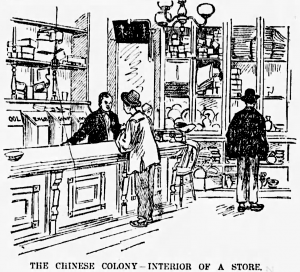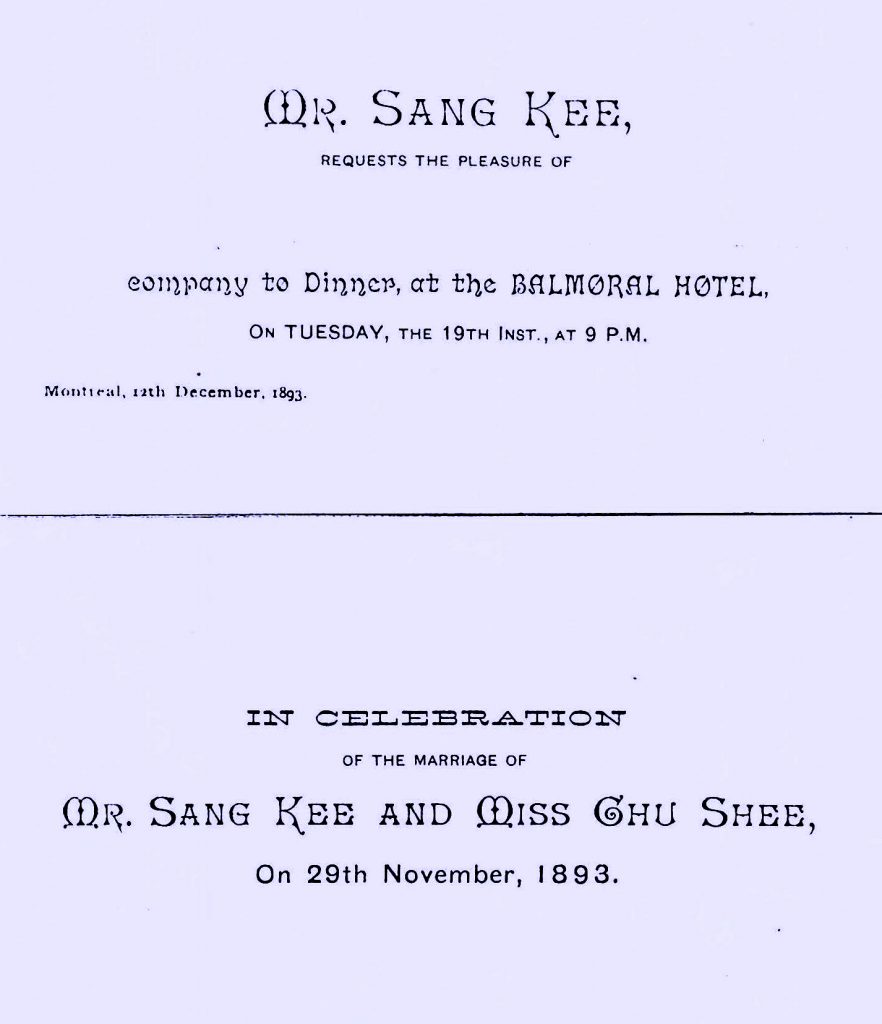
Figure 1: A photograph of Ho Sang Kee, 1905. (Image from the collection of the late Avis H. Lee).
Ho Sang Kee (AKA Sang Kee, Haw Sang Kee, Sam Kee, San Kee, Charlie Hore Sang) was born in 1859 in Guangdong Province, China. Around 1878, he made the journey across the Pacific and began making and saving money in Canada. Ho Sang Kee initially lived in Toronto and attended a Chinese Sunday School in the city. He would also begin his employment with the Canadian Pacific Railway sometime after its incorporation in 1881, as he would later take a contract from the company to board Chinese passengers travelling across the country, and it is possible that he was the same “Sang Kee” who served as the CPR’s first Chinese interpreter. However, it was in 1890s Montreal where Ho Sang Kee would become a pivotal early Chinese figure in Canada as a successful businessman, naturalized British citizen, and point-of-contact for Chinese men travelling across the continent during a period of anti-Chinese legislation in both Canada and the United States.
Upon moving to Montreal, Ho Sang Kee established the Quong Hing Tea Co. wholesale retailer, grocery, and boarding house on rue de la Gauchetière in the heart of Montreal’s Chinatown, and he quickly became one of the central figures in Montreal’s Chinese community. At its inception in 1891, Quong Hing Tea Co. was the only non-laundry Chinese-owned business in the city.

Figure 2: A typical interior of a Chinese store in 1890s Montreal, much like the ground floor of the Quong Hing Tea Co. (Image from “The Chinese Colony. A Visit to Sang Kee’s Big Boarding House”. The Montreal Star [Montreal QC], 15 Jun 1895, pg. 8).
The ground floor of the building at 625, rue de la Gauchetière consisted of a cooking and lounging room along with a shop stocked with Chinese goods, while the upper three stories comprised his own residence and sleeping quarters that consistently housed 30 to 40 Chinese men, but sometimes hosted as many as 70 guests at once. The company name soon became synonymous with his own; some newspapers even referred to Ho Sang Kee as “Sam Quong” or, simply, “Quong Hing”. This could not have been an easy business for Ho Sang Kee, and his career was certainly not without its share of troubles. Police raided his building multiple times during the 1890s, resulting in arrests of patrons and himself on suspicion of opium smuggling and gambling, but he continued to operate his establishment despite pushback from law enforcement, even suing the City of Montreal for “false arrest” in the latter case.

Figure 3: Mr. and Mrs. Ho Sang Kee’s wedding banquet invitation. Colourized. (Image from the collection of the late Avis H. Lee).
In October 1892, while staying at Ottawa’s Russell House Hotel, Ho Sang Kee made “enquiries touching the scope of the Dominion laws as applied to his countrymen”; in other words, he went directly to the Canadian capital with his concerns about the federal Head Tax legislation excluding Chinese people from entering Canada unless they paid hefty fees. It was likely around this time that he was sworn in as a naturalised British citizen by Judge Louis Wilfrid Sicotte in Montreal, though official records of this have not been found.
Ho Sang Kee’s future wife, Chu Shee, would arrive in Vancouver from China on November 21, 1893, and by November 29, the two were married in Montreal’s first Chinese wedding. The couple hosted an enormous banquet at Montreal’s Balmoral Hotel on December 19. Guests included members of the local Chinese community, American politicians, deputy collectors, officials from the CPR, and local journalists. Even Judge Sicotte received one of Ho Sang Kee’s “exceedingly neat and pretty” invitations printed on lavender card.
Six months later, on June 23, 1894, The Montreal Star reported that “the floating population of Chinese in Montreal has been diminished” by an “exodus” of at least 150 men to the United States, and a few weeks later, Ho Sang Kee was arrested in Boston for his alleged involvement in smuggling Chinese men over the U.S. border via an “underground route”. He was released on bail and was back at 625, rue de la Gauchetière by August 6, where he was met by reporters from The Boston Globe and agreed to give an interview. When asked about the smuggling allegations, he made an “emphatic and indignant denial”. The interviewer inquired whether or not he was afraid to return to the United States, to which he replied: “Why not? My business is there and in Montreal. I not afraid they will arrest me. Mr Scharf is the man; he will be arrested”, all while “laugh[ing] merrily at his own humor”. Three days earlier, news reached Montreal that U.S. Chinese Inspector Thomas J. Scharf had been met with a $10,000 lawsuit in New York after being unable to provide any evidence to prove his story about the nature of the alleged smuggling operation. The Montreal Star reported that Ho Sang Kee was “delighted with the news” about the lawsuit facing Scharf.

Figure 4: An illustration of Mr. and Mrs. Ho Sang Kee’s wedding banquet at the Balmoral Hotel, Montreal. From left to right: Mr. Wing Sing, Mrs. Wing Sing, Jew Guey, Ho Sang Kee, Chu Shee, Miss Carrie Arless. (Image from The Montreal Star [Montreal, QC], 20 Dec 1893, page 8).
Ho Sang Kee’s and his wife’s first child, George (Georgie), was born at the boarding house the following year, on September 29, 1895. Author Edith Eaton (Sui Sin Far) described Ho Sang Kee as “wreathed with smiles” while celebrating his son’s birth. In January 1898, Quong Hing Tea Co. was still receiving many Chinese guests, but by the time Lovell’s Directory for 1898-1899 was published, 625 La Gauchetière would be listed as vacant. By 1904, Mr. and Mrs. Ho Sang Kee were raising five children at 173 St. Urbain street: George, Avis, Grace, Florence, and Henry. Tragically, in 1908, Ho Sang Kee’s wife and twelve-year-old son George died months apart and were buried at Montreal’s Mount Royal cemetery. Tuberculosis was ravaging Montreal in 1908 at a disproportionate rate compared to other Canadian cities, resulting in upwards of 1000 deaths per year, and Ho Sang Kee’s family may have been victims of this devastating “white plague”. After this period, Ho Sang Kee’s name disappears from the press and from the public record altogether. He was, apparently, working in the west at this time, and his children were fostered by the Wilson family in Quebec City. By the 1930s, Ho Sang Kee was living with his daughter Avis, who was married to James Lee. Ho Sang Kee died in 1949 and is buried at Cimetière Urgel Bourgie in Montreal.

Figure 5: Ho Sang Kee’s family in 1905. From left to right: George, baby Henry on Chu Shee’s lap, Grace, Florence, and Avis, with Ho Sang Kee in the background. (Image from the collection of the late Avis H. Lee).
Ho Sang Kee became more wary of newspapermen as the 1890s progressed, likely due in no small part to the sensational headlines and stories printed about him across the continent. One British Columbian newspaper referred to him as both “the Eastern Smuggling King” and the “Prince of Smugglers” in the same short article, and much of the press about him across North America was equally unsavoury. Perhaps this media frenzy surrounding his existence prompted a retreat from the public eye. However, he figures quite prominently and favourably in Edith Eaton’s Montreal journalism from the 1890s, and he evidently had a wide circle of family, friends, associates, and connections in both Canada and the United States. The Boston Globe reported on a wedding banquet in celebration of Mr. and Mrs. Ho Sang Kee in Boston only days before their banquet at the Balmoral Hotel in Montreal, and it was noted that “all the elite of Chinatown” and “many prominent Americans including government officials in Burlington and Boston” were invited. Eaton even describes a flood of congratulatory messages for Ho Sang Kee pouring into Montreal “from friends in Boston and New York” when his son was born in 1895. Despite the present mysteries that remain unsolved about his life, it is clear that Ho Sang Kee lived at the heart of a transnational community of Chinese North Americans, and facilitated the sheltering of thousands of Chinese men in his Montreal boarding house during a tumultuous time when Canada and the United States endeavoured to legislate them out of sight.

Figure 6: Ho Sang Kee’s headstone at Cimetière Urgel Bourgie, Montreal. (Image from the collection of Laurence Lee).
This article was edited on 3 June 2023 to include corrections and additional information provided by a member of Ho Sang Kee’s family.
Sources
“A Chinaman Investigating”. The Ottawa Journal [Ottawa, ON], 29 Oct 1892, pg. 1. https://www.newspapers.com/image/44403868
“A Chinese Child Born at the Hotel on Lagauchetiere Street”. The Montreal Star, 30 Sept 1895, pg. 1. https://www.newspapers.com/image/740892614
“A Chinese Joint Pulled”. The Gazette [Montreal QC] 06 Sept 1892, pg. 5. https://www.newspapers.com/image/419299191
“A Dead Chinee and Thirty-Five Living Chinamen at Windsor Station – The Quong Hing Boarding House”. The Montreal Star, 07 Nov, 1893. https://www.newspapers.com/image/740887964
“An Advance Step in the White Plague War”. The Montreal Star [Montreal, QC], 09 Sept 1908, pg. 4. https://www.newspapers.com/image/739462624
“A Street Directory of Montreal”. Collection d’annuaires Lovell de Montréal et sa région, 1898-1899, pg. 233. https://collections.banq.qc.ca/ark:/52327/3653002.
“A Street Directory of Montreal. M-Z”. Collection d’annuaires Lovell de Montréal et sa région, 1908-1909, pg. 498. https://collections.banq.qc.ca/ark:/52327/3653002.
“Bidden to the Feast”. The Gazette [Montreal QC], 14 Dec. 1893, pg. 3. https://www.newspapers.com/image/419330059
“Birds’ Nest Soup for Bride”. The Boston Globe [Boston MA], 16 Dec 1893, pg. 10. https://www.newspapers.com/image/430703721
“Briefs”. The Gazette [Montreal QC], 16 May 1896, pg. 3. https://www.newspapers.com/image/419335209
“Chinese Immigrants”. The Gazette [Montreal QC], 19 Jan 1898, pg. 3. https://www.newspapers.com/image/420313408
“Chinese Returning Home”. The Gazette [Montreal] 06 Dec, 1893. https://www.newspapers.com/image/419329057
“Collapse of a Sensation”. The Montreal Star [Montreal QC], 14 Jul 1894, pg. 4. https://www.newspapers.com/image/740878348
“‘Completion of the Moon.’ Sang Kee’s Baby’s Head Shaved”. The Montreal Star [Montreal QC], 23 Oct 1895, pg. 6. https://www.newspapers.com/image/740893254
“Death of Chinese Boy”. The Gazette [Montreal QC], 05 Mar 1908, pg. 3. https://www.newspapers.com/image/420311267
“First Chinese Woman”. The Gazette [Montreal QC], 02 Jul 1908, pg. 3. https://www.newspapers.com/image/420762169
“J. B. Picken Retires”. The Gazette [Montreal QC], 22 Feb 1913, pg. 9. https://www.newspapers.com/image/419700765
“Jew Guey”. Genealogy / Immigration & Citizenship / Immigrants from China, 1885 to 1952, Government of Canada. http://central.bac-lac.gc.ca/.redirect?app=immfrochi&id=17198&lang=eng
Laurence Lee (great grandson), correspondence, May 2023.
“Our Mongolian Visitors”. The Gazette [Montreal QC], 19 Sept 1893, pg. 2. https://www.newspapers.com/image/419326582
“Prince of Smugglers”. Victoria Times Colonist [Victoria, BC], 16 Jul 1894, pg. 1. https://www.newspapers.com/image/508283565
“Sang Kee and Miss Chu See”. The Montreal Star [Montreal, QC], 20 Dec 1893, page 8. https://www.newspapers.com/image/740890294
“Sang Kee’s Hotel Raided”. The Montreal Star [Montreal, QC], 25 Apr 1896, pg. 16. https://www.newspapers.com/image/740885352
“Sang Kee’s Humor”. The Boston Globe [Boston MA], 06 Aug 1894, pg. 8. https://www.newspapers.com/image/430675774
“Scharf’s Failure to Prove His Chinese Smuggling Charges Places Him in an Awkward Position”. The Montreal Star, 03 Aug 1894, pg. 6. https://www.newspapers.com/image/740879608
“The Chinese Colony. A Visit to Sang Kee’s Big Boarding House”. The Montreal Star [Montreal QC], 15 Jun 1895, pg. 8. https://www.newspapers.com/image/740718942
“The Chinese Land of Promise”. The Montreal Star [Montreal QC], 23 Jun 1894, pg. 8. www.newspapers.com/image/740900828
